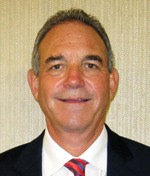Most evidence supports the effectiveness of platelet-rich plasma therapy for elbow tendinitis and anterior cruciate ligament reconstruction, raising the possibility that insurance companies might one day cover the procedure for those problems, according to a literature review in the Journal of the American Academy of Orthopaedic Surgeons.
"The clinical evidence suggests that local injection of PRP [platelet-rich plasma] containing [white blood cells] may be beneficial to patients with chronic elbow epicondylitis refractory to standard nonsurgical treatment. However, the results of PRP treatment of other chronic tendinopathies are not as clear," concluded lead author Dr. Wellington Hsu, an orthopedic surgeon at Northwestern University in Chicago, and his coauthors, also orthopedic surgeons. They also determined that "although no significant difference in clinical outcomes has been found, preliminary clinical evidence suggests that PRP may be beneficial during the ligamentization and maturation processes of [anterior cruciate ligament] graft healing as well as that of the patellar tendon graft harvest sites."
However, for rotator cuff and Achilles tendon repairs, "the results of clinical studies are equivocal, and further study is needed before definitive conclusions can be drawn and recommendations can be made." Similarly, "further study is required before conclusions can be made regarding the efficacy of PRP in the management of osteochondral lesions and knee osteoarthritis," they wrote.
"Limited clinical evidence exists demonstrating any beneficial effects from the use of PRP in bone-healing applications. The available evidence indicates that PRP is not efficacious either alone or as an adjunct to local bone graft[s]," the authors wrote. The review included more than 60 PRP studies and publications (J. Am. Acad. Orthop. Surg. 2013;21:739-48).
PRP is created by spinning down a patient’s blood sample to isolate and concentrate platelets; the resulting solution is then injected into their joint spaces, tendon sheaths, or other areas. It’s rich in growth factors and other substances thought to aid tissue healing and regeneration.
PRP was first used in the 1950s for dermatology and oromaxillofacial conditions; "interest in PRP jumped way ahead of the research" during the last 5 years partly because celebrity athletes have been using it to recover from injuries. "The hype around PRP definitely came before the science," which is why insurance companies don’t cover it, Dr. Hsu said in a statement.
Instead, patients sometimes pay more than $1,000 for just one of several injections during a typical treatment course. As evidence builds for some indications, "insurance companies hopefully will consider coverage," he said.
Success varies depending on the preparation method and composition. With more than 40 commercial PRP systems on the market, both preparation method and composition vary from one study to the next, as do protocols. In addition, "the dose-response curve is not linear, and a saturation effect has been described in which an inhibitory cascade ensues once a sufficiently high concentration of platelets is reached," the authors wrote.
"Because platelets can exert the greatest influence on healing during or immediately after the inflammatory phase of injury, some authors have postulated that the timing of the administration of PRP has a greater impact on healing than does the number of platelets," they wrote.
Valued at $45 million in 2009, the PRP market is expected to grow to $126 million by 2016.
Dr. Hsu and most of the other seven authors reported financial ties to companies that make PRP equipment or products, including Medtronic Sofamor Danek, Stryker, Terumo Medical, Zimmer, Baxter, Biomet, ThermoGenesis, BioParadox, Smith & Nephew, and DePuy.


